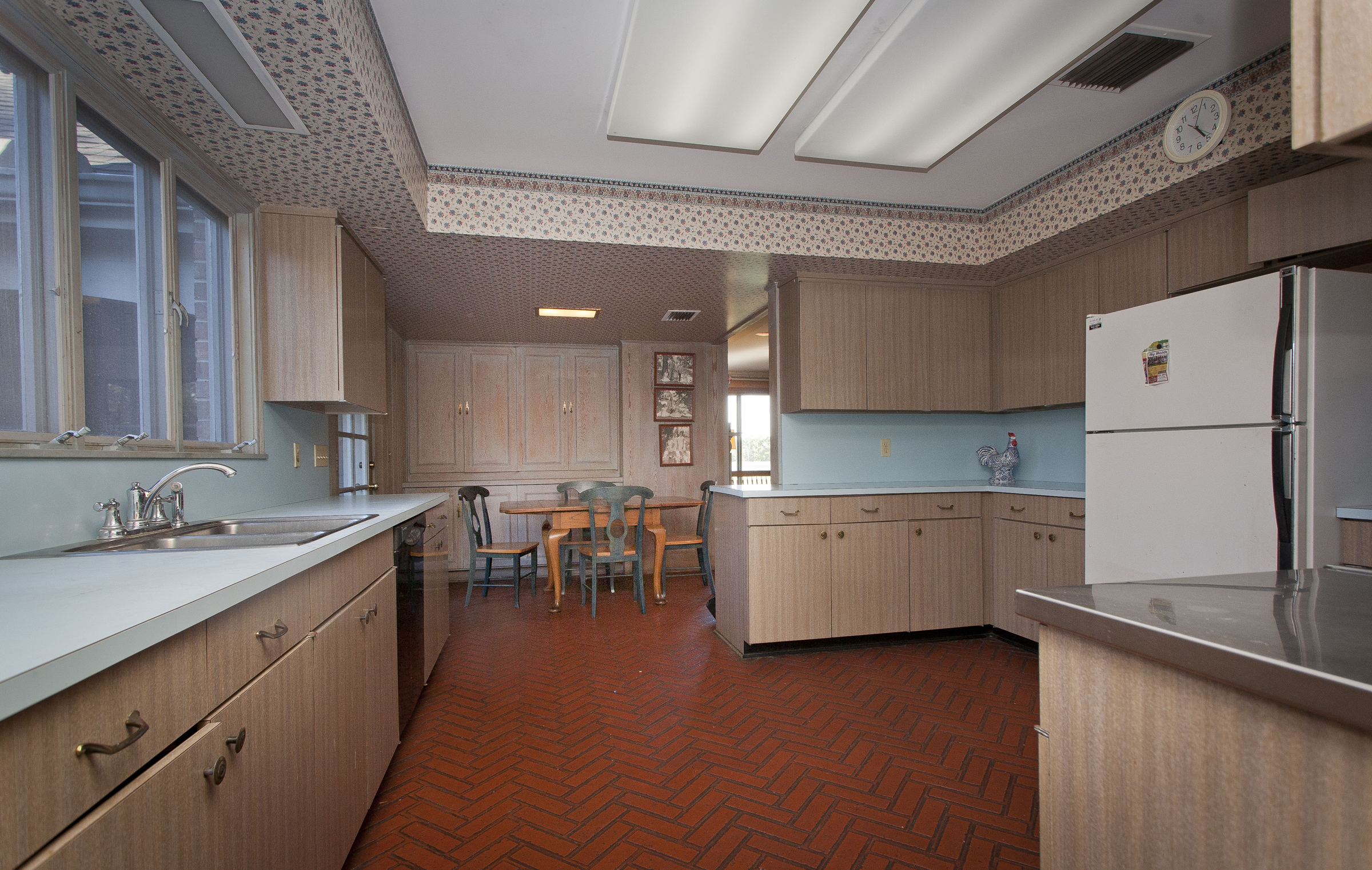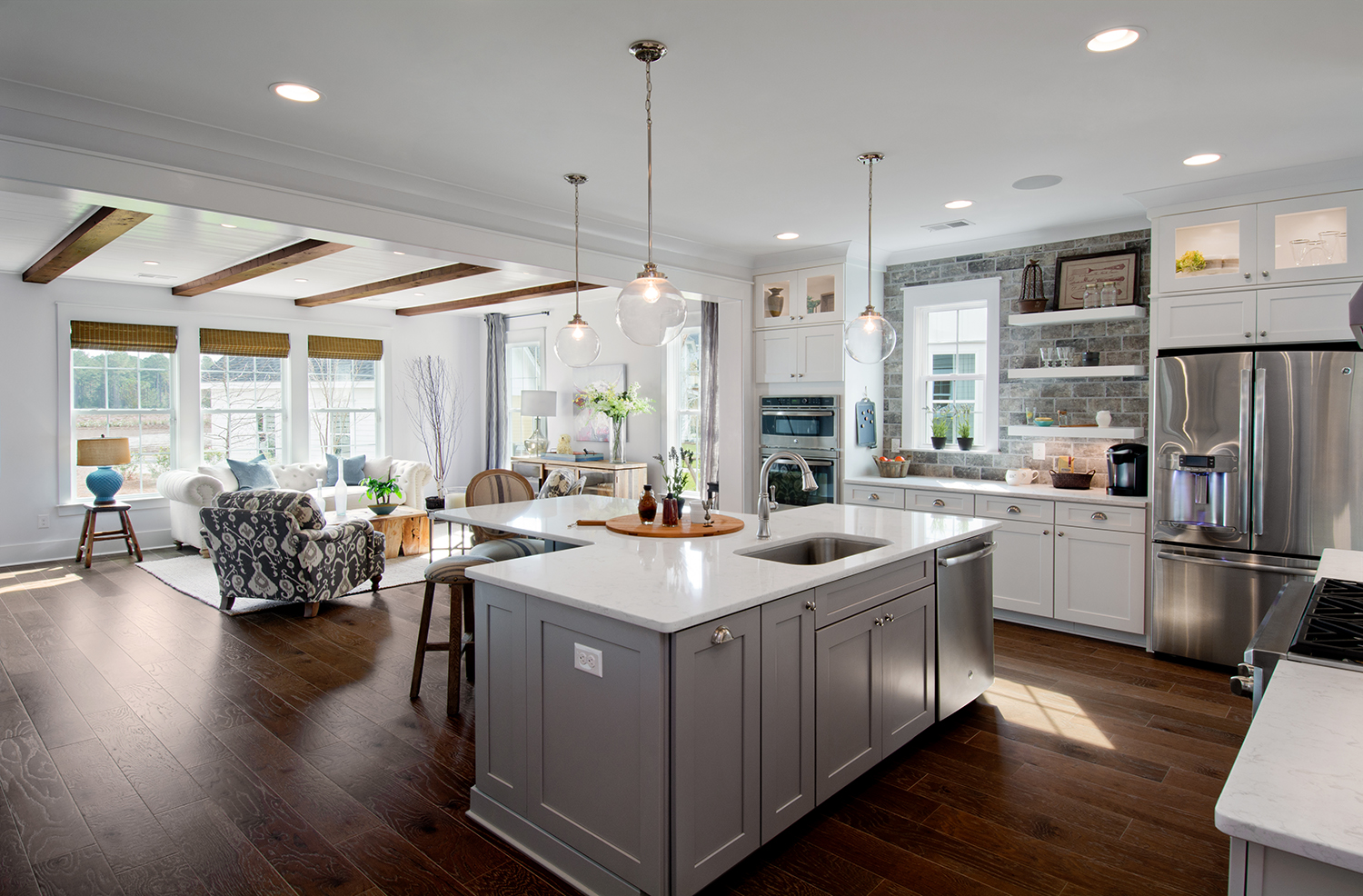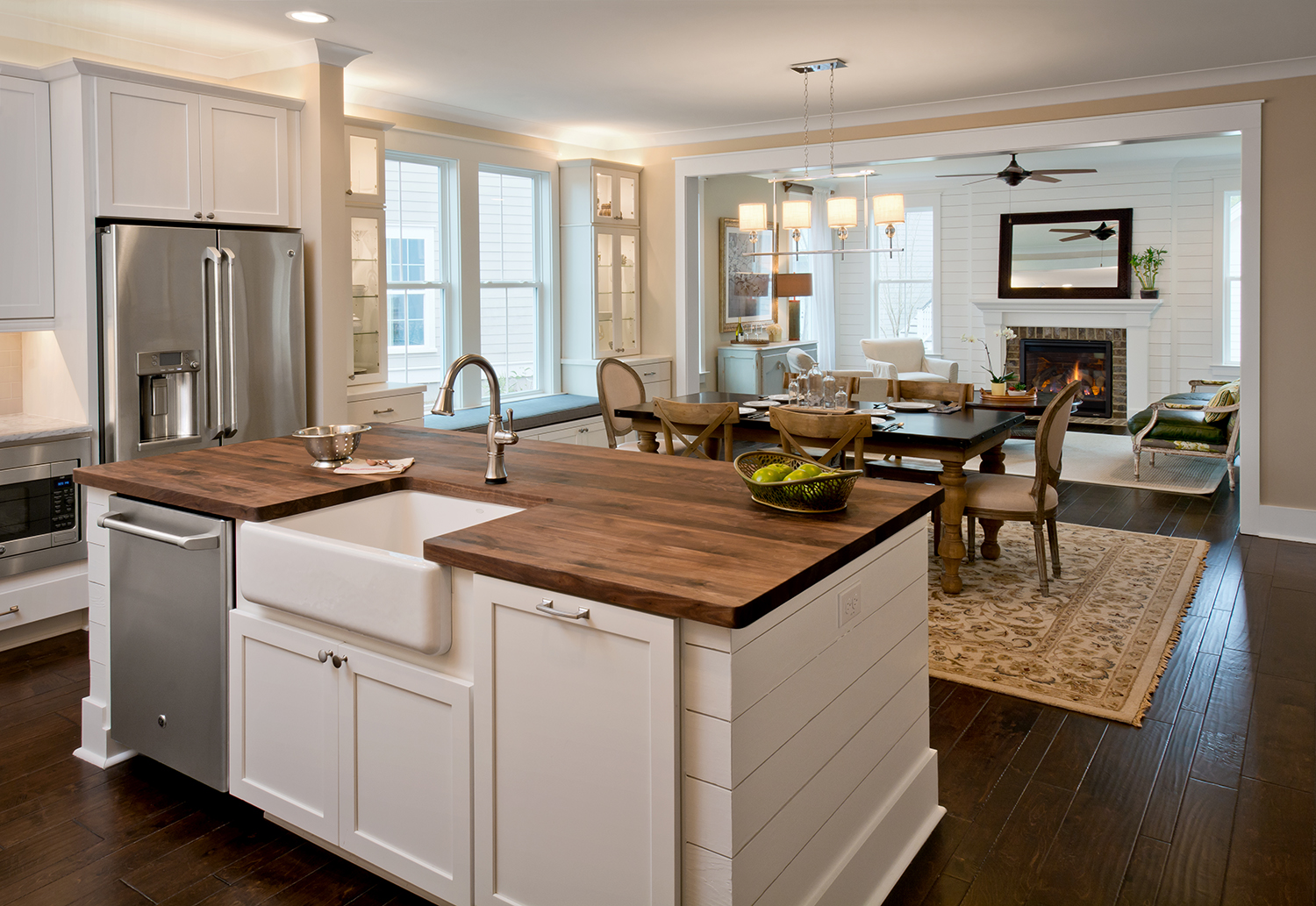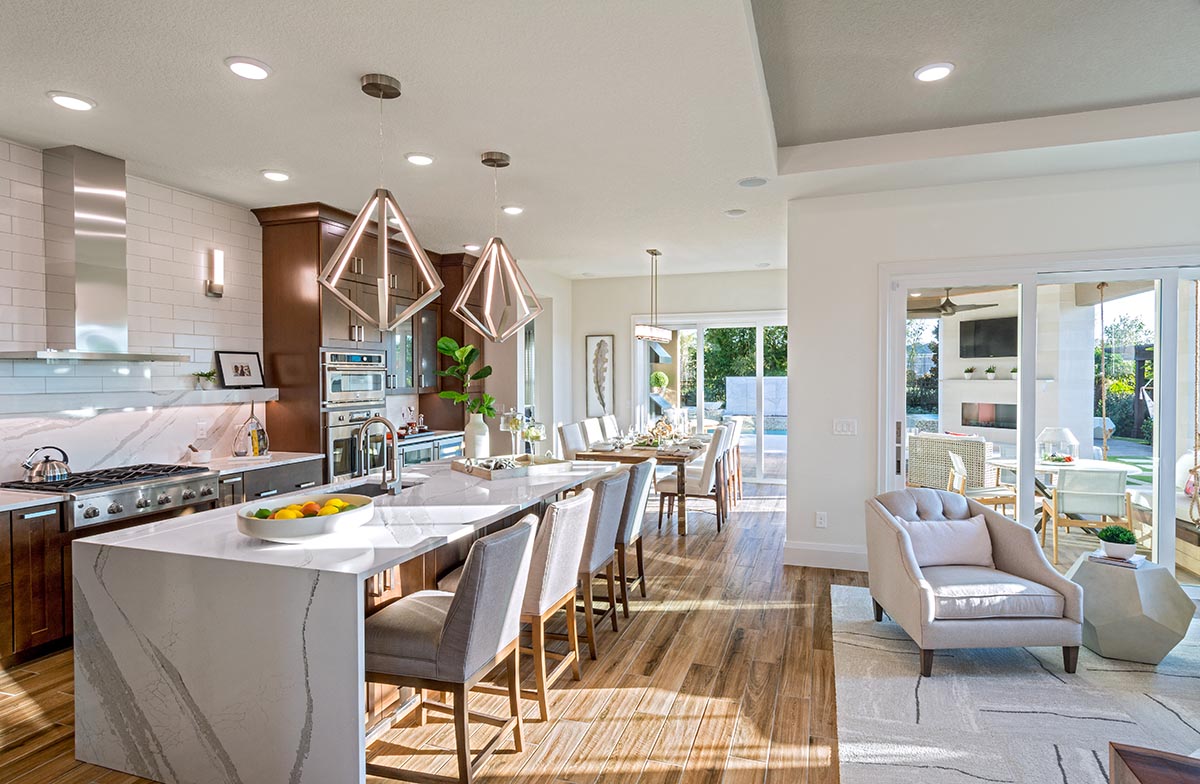The kitchen island has become the centerpiece of our kitchens – and in many ways, the heart of the home. It is crucial to get the island right, so a lot of thought goes into its design and layout. So, what goes into the island? The cook-top? The sink? Nothing at all?
The Kitchen Sink!
 I’m a firm believer that the kitchen sink belongs in the island – especially if the island has a vista to the adjacent family room and TV. And where there is a sink, there should be a dishwasher. I do not subscribe to the outdated notion that the sink should be on the outside wall of home with a window above it. That placement was valid when kitchens were little more than a confined work space closed off from the rest of the house and there was nothing else to view.
I’m a firm believer that the kitchen sink belongs in the island – especially if the island has a vista to the adjacent family room and TV. And where there is a sink, there should be a dishwasher. I do not subscribe to the outdated notion that the sink should be on the outside wall of home with a window above it. That placement was valid when kitchens were little more than a confined work space closed off from the rest of the house and there was nothing else to view.
But now that our kitchens are an integral part of our everyday lives, the sink should face the action. Talking with the sales consultant at a new 55+ community, the placement of the sink became the topic of much discussion. Buyers had seen the floorplans online and didn’t find a single plan with the sink on the outside wall. This concerned the buyers initially, but once they stepped inside the models, they abandoned that notion and were fully on board with a kitchen island sink!
Think about it, we are constantly at the sink. As we prepare our meals, we first wash our hands, then the vegetables, fill pots with water, grind up the unwanted “ends” of the vegetables, – you get the picture. Providing adequate room next to the sink is critical for both food prep and for cleanup. I like at least two feet on either side of the sink: dirty dishes are stacked on one side of the sink to be rinsed, then stacked on the other side of the sink to be loaded into the 2’ wide dishwasher. So, a 36” wide sink needs at least a 7’ island.

When square footage is at a premium. The smallest island configuration is 6’ wide using a 30” sink, with 18” to one side for stacking dishes dirty dishes and the pull-out trash can. Make sure to place the dishwasher closest to the cabinets where clean dishes are unloaded and be aware of the impact of the dishwasher door when open. Will it hit the oven door if both are open at the same time?
Multi-Purpose
If your island is longer, you’ll want to include a drawer stack and consider a drawer microwave (If you haven’t seen one in action – you’re missing out!). This is a much better location for the microwave as opposed to over the stove-top, especially if the house is designed for young families. Not only is the stove top a dangerous place for kids to try to reach over, it is also one of the more crowded places in our kitchen. Moving the microwave to the island also gives builders an opportunity to offer a double wall oven option instead of a single oven and microwave stack. Trust me, buyers won’t need much convincing once they see it!
Why Not the Cook-top?
I’m often asked why we don’t design the island with a cook-top in it. Yes, we all like to imagine ourselves sauteing a fish in front of an audience, Food Network-style. However, there are two complications with this placement.
The first is venting. An overhead vent would potentially block your view, especially if you’re tall. Or you could use a downdraft vent. My old house had a downdraft cook-top and it wasn’t as effective as I would have liked. Let’s face it, heat and smoke doesn’t sink – it rises. There is a vent that rises out of the counter top that is more effective, but I find it obtrusive and noisy – not very conducive to friendly conversion with those gathered around the island.
Which brings me to the second complication – it’s hot! The heat from the cooking surface makes the adjacent seating less comfortable. I for one do not want my wine to cook in my glass as I sit at the island, thank you very much!
Once you’ve decided what to put on the “working” side of the island, then the fun really begins with the shape and seating side of the island. We will address that side of the island in a future blog.
Categorized in: KitchenDesign
This post was written by Housing Design Matters



